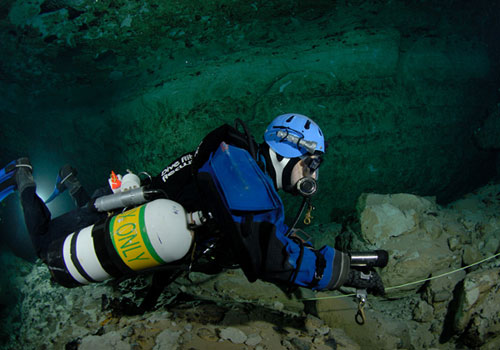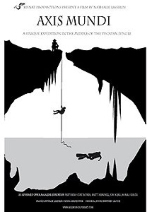|
These are configured with regulators as for twin independent cylinders with the only difference being the SPGs are usually mounted on short (6" or 9") hoses. The cylinders are attached to a side mount harness usually by way of clips about halfway down the cylinder and bungee cord around the neck of the cylinder.
Side mounting has evolved over the past 20 years in Australia from cave divers putting together their own bespoke rigs to the situation now where most divers purchase an off the shelf product from a technical dive equipment manufacturer.
As for back mounted twin independent cylinders, the diver progressively breathes down each cylinder by swapping second stages, keeping the cylinders roughly equal until the turnaround pressure is reached.
Advantages
- Redundant gas supply is available if there is a problem with one cylinder/regulator
- Cylinders can be carried individually to the water's edge
- Side mounts have a lower profile and a cave diver therefore can access a greater number of caves and cave passage
- Valves are protected and easily accessible under the arms of the diver
- If there is an issue with a leaking hose or regulator the diver can close that cylinder post but still have access to most of the gas in that cylinder by feathering the valve while breathing
Disadvantages
- Diver needs to monitor both cylinder pressures and be disciplined to breathe the cylinders down roughly equally
 John Dalla-Zuanna diving side mount in Tank Cave | Photo: Dr Richard (Harry) Harris John Dalla-Zuanna diving side mount in Tank Cave | Photo: Dr Richard (Harry) Harris
|


